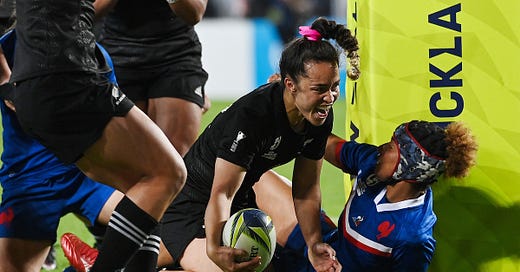More than a million reasons to love this RWC
A shared-file chat with Scotty Stevenson, PLUS: The Week That Was and the Weekend That Will Be

The Black Ferns stand on the cusp of a remarkable turnaround in fortunes as they face one more sleep (or perhaps sleepless night would be more apt) before their World Cup final at Eden Park. A year ago their campaign was in disarray as they left …
Keep reading with a 7-day free trial
Subscribe to The Bounce to keep reading this post and get 7 days of free access to the full post archives.



